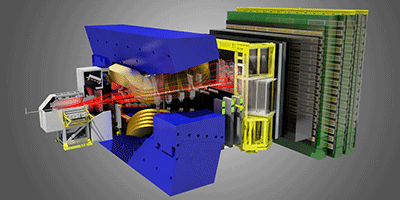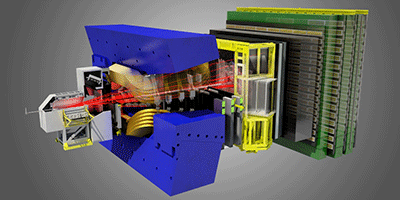Four-Quark State Confirmed
First there were hints and hedges, but now there is a definitive observation of a four-quark particle called (4430). Studying meson decays, the LHCb collaboration has collected a strong enough signal to declare in the latest Physical Review Letters that (4430) is a bona fide particle. It joins other exotic particles, such as (3900), that defy the conventional wisdom that quarks only combine in pairs or triplets (see 17 June 2013 Viewpoint).
In 2008, the Belle experiment in Japan reported a peak in meson decay data that suggested a negatively charged particle with mass times that of a proton. The quark content of this (4430) particle posed a puzzle: its decay implied it contained a charm quark and anticharm, while its charge required two more quarks (a down and anti-up, for example)—giving a total of four. However, subsequent studies by SLAC’s BaBar experiment called into question the evidence for a new particle.
The LHCb experiment at CERN in Geneva, which is primarily set up to study bottom-quark physics in the LHC’s proton-proton collisions, has collected relevant decays at energies of and tera-electron-volts. This sample is a factor of larger than the data sets of Belle and BaBar. The analysis by the LHCb collaboration shows a highly significant signal (about standard deviations above background) that removes any doubt that (4430) is a real particle. The team also confirms that the particle has a spin of and a positive parity, which rules out the interpretation of the particle signatures as merely arising from a pair of (two-quark) mesons. The only remaining explanation, according to the researchers, is that (4430) is a bound state of four quarks. – Michael Schirber





